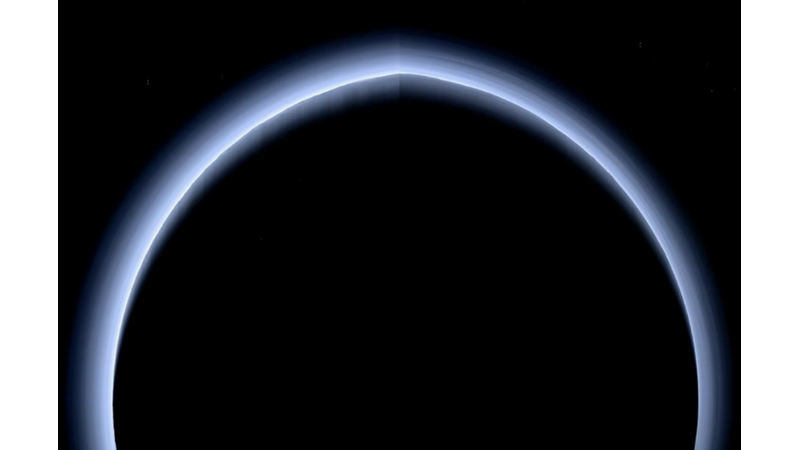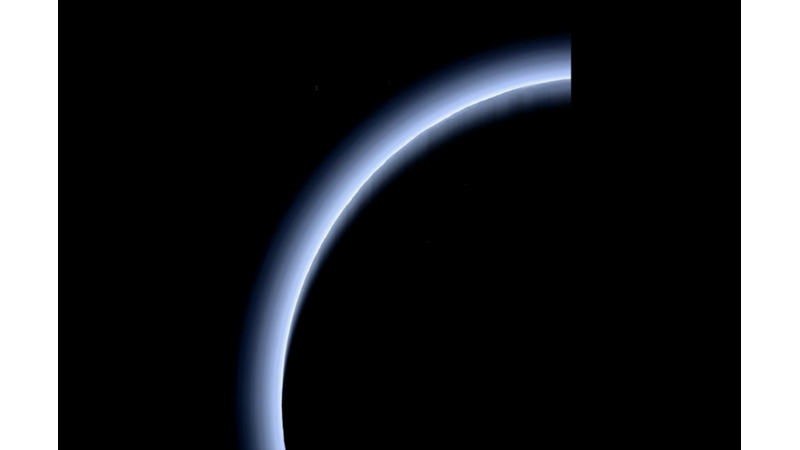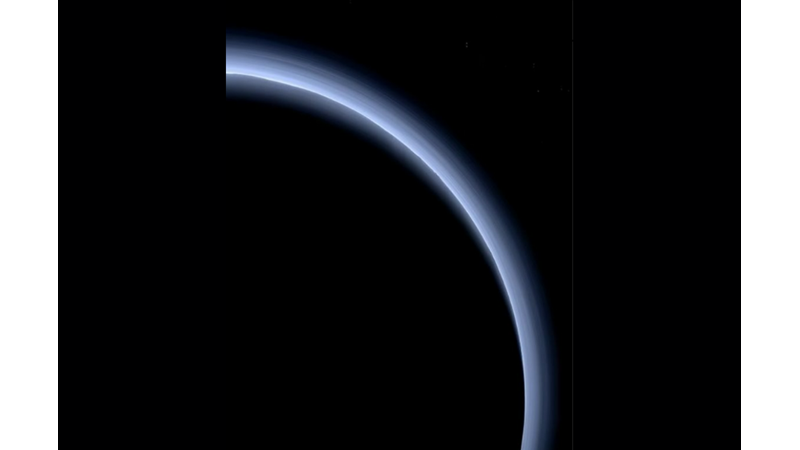Pluto's hazy, extremely thin atmosphere was captured by the New Horizons spacecraft 120,000 miles (200,000 km) above the dwarf planet's surface as the spacecraft passed by. Scientists think the haze is a photochemical fog formed when sunlight and molecules such as methane interact to produce complex hydrocarbons. These hydrocarbons accumulate in tiny micrometre-sized particles and scatter sunlight, creating the bright blue haze seen in this image.
Pluto's mountains can be seen silhouetted against the atmosphere in the upper left of the first image, creating streaks of light similar to those seen on Earth at dawn and dusk, despite the dwarf planet's distance from the Sun. Although Pluto is on average 3.7 billion miles (5.9 billion kilometres) from the Sun, its atmosphere expands when it approaches the Sun and can freeze when it moves away. From 1979 to 1999, Pluto was closer to the Sun than Neptune.
Figure 1: The blue arc of Pluto's atmosphere and surface carves black space from lower left to upper right. At 11 o'clock, the image shows mountains casting shadows against the sunlight.
Figure 2: The blue arc continues from the top left to the bottom right.


 Nielawore
Nielawore











Yorumlar
im impressed
Yorum yazmak için lütfen giriş yapınız